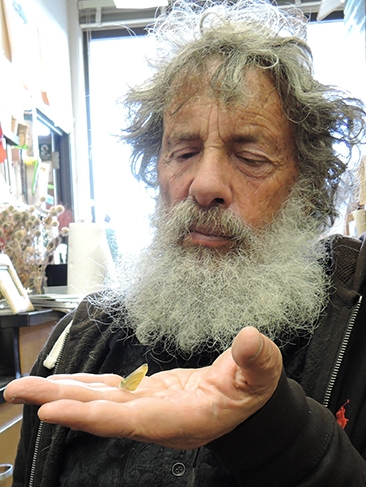
Art Shapiro, distinguished professor of evolution and ecology at the University of California, Davis, figured it was too rainy and too cold to head over to West Sacramento to look for the first cabbage white butterfly of the year, so he walked around campus Thursday.
And he found it.
Shapiro nabbed the cabbage white butterfly, Pieris rapae, at 1:56 p.m., Thursday, Jan. 19 in the student gardens near the Solano Park Apartments.
He again won the annual Butterfly-for-a-Beer contest, which he launched in 1972 as part of his long-term studies of butterfly life cycles and climate.
The contest rules indicate that the first person who finds the first cabbage white butterfly of the year in the three-county area of Yolo, Solano and Sacramento receives a pitcher of beer or its equivalent.
Shapiro, who has been defeated only four times in the contest (and all by UC Davis graduate students) said this was the first find on the campus.
“Earlier today I was asked when P. rapae would come out, given the very wet January this year. I replied that when it stopped raining. we'd probably get into tule fog…and that would take us into February for any decent butterfly weather.”
Jan. 19 dawned with a “a cold, unstable air mass overhead,” Shapiro recalled, describing it as “an ideal convective day, with showers and thundershowers popping up.”
With the ground and the vegetation sopping wet, he figured this would not a “potential rapae day.”
“When I got out of class at noon it was bright and sunny, clear overhead but with cumulus building to the west over the Coast Range. It felt warm and I might have gone to West Sacramento, but decided by the time I got there it would have clouded over and perhaps even be raining. So I got lunch and then walked over to the student gardens near the Solano Park Apartments just to gather host plant for my rapae culture--yes, I'm mass-rearing the bugs for photoperiod studies, and have some 100 live ones in a refrigerator."
“It remained sunny and got quite warm—55 or 56, I'd say," Shapiro related. "The vegetation was indeed sopping wet. At 12:59 I saw—a rapae. It was sitting quietly, wings folded, on a cultivated Brassica. It had not opened its wings to body-bask, that is, warm the body by exposure to incoming solar radiation. If it had, it almost certainly would have flown and, being netless, I would have lost it. Instead it just sat there as I picked it off the plant. I always carry one glasseine envelope in my eyeglass case. Into the envelope it went. It's a winter-phenotype male and, I imagine, had just emerged this morning and not yet flown.”
“This is the second year in a row that the first rapae was found in a garden rather than one of the conventional ‘warm pockets,' Shapiro noted. “What does it all mean?”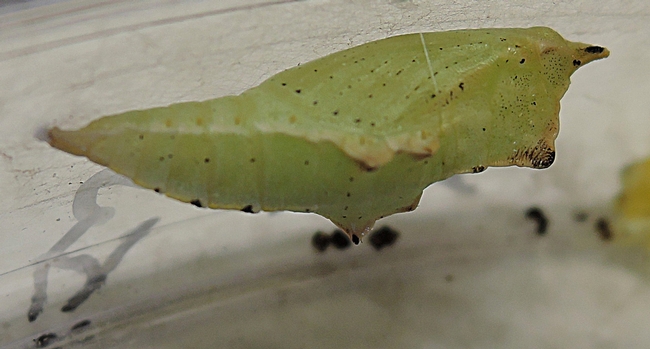
Davis resident Cindy McReynolds, program manager of the Bruce Hammock lab, UC Davis Department of Entomology and Nematology, spotted some cabbage white butterfly chrysalids in her garden two weeks ago. "They were on the cabbage when I was removing the vegetation."
Colleague/collaborator Matthew Forister, McMinn professor of biology at the University of Nevada, Reno (his major professor was Shapiro), said that Shapiro's find was right on time. "You couldn't have hit closer to the trend line if you'd tried," he told him, sending him the illustration below. "This year in red," he pointed out, noting that "the slope has not changed from last year."
The cabbage white was not the only butterfly Shapiro found on Jan. 19. He also noticed a “fresh-looking female West Coast Lady, Vanessa annabella, nectaring at a crucifer in the same garden—first one of those this year too, but it's a hibernator.”
Shapiro launched the "Beer-for-a-Butterfly" contest in 1972 to draw attention to Pieris rapae and its first flight. “Since 1972, the first flight has varied from Jan. 1 to Feb. 22, averaging about Jan. 20.” The butterfly is emerging earlier and earlier as the regional climate has warmed, said Shapiro, who researches biological responses to climate change. "The cabbage white is now emerging a week or so earlier on average than it did 30 years ago here."
The professor, a fellow of the American Association for the Advancement of Science, the Royal Entomological Society and the California Academy of Sciences, said the cabbage white butterfly inhabits vacant lots, fields and gardens where its host plants, weedy mustards, grow.
Shapiro teaches his students well. The other winners were his own graduate students: Adam Porter defeated him in 1983; and Sherri Graves and Rick VanBuskirk each won in the late 1990s.
Shapiro, who is in the field more than 200 days of the year, monitoring butterflies of central California, knows where to find the cabbage whites. He has collected many of his winners in mustard patches near railroad tracks in West Sacramento, Yolo County. Over the last seven years, five of the winners came from West Sacramento; one in Davis, Yolo County; and one in Suisun, Solano County.
Coincidentally, Shapiro caught the 2013 and 2009 winners on President Obama's Inauguration Day. This year he missed President Trump's Inauguration Day by a day.
Shapiro maintains a research website on butterflies, where he records the population trends. He and artist Tim Manolis co-authored A Field Guide to Butterflies of the San Francisco Bay and Sacramento Valley Regions, published in 2007 by the University of California Press.
Attached Images:
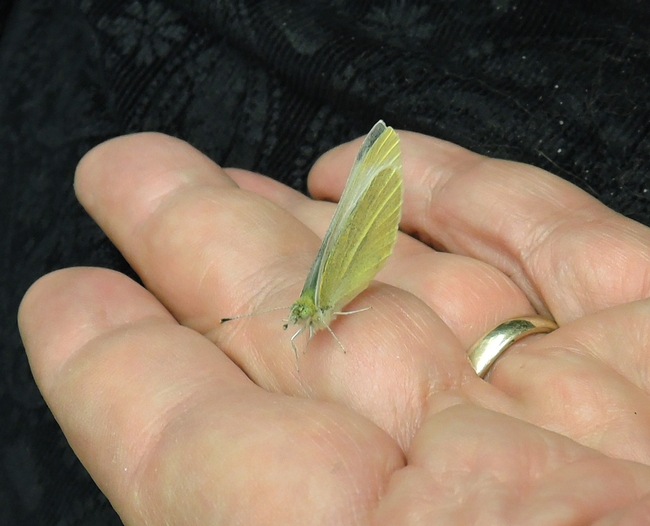
This is the first cabbage white butterfly of the year, found by the contest's sponsor Art Shapiro on the UC Davis campus. (Photo by Kathy Keatley Garvey)
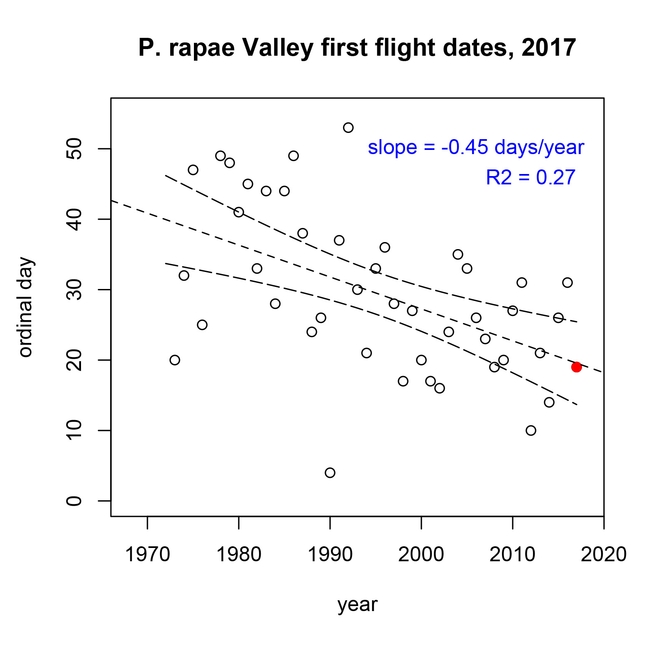
A graph by professor Matthew Forester, University of Nevada, shows that the first cabbage white of 2017 was right on time.
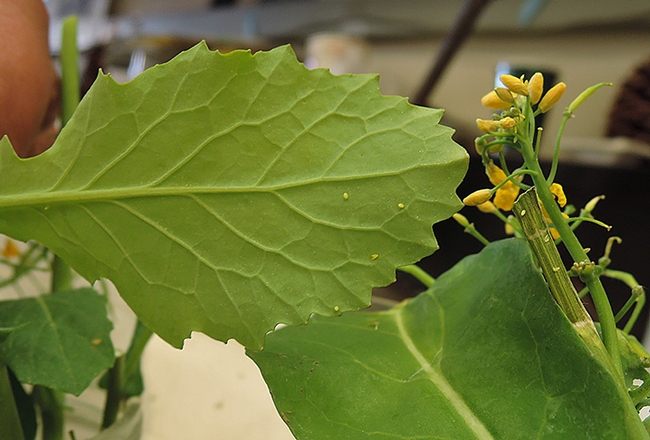
These are the eggs of the cabbage white butterfly, being reared by Art Shapiro in his lab at UC Davis. (Photo by Kathy Keatley Garvey)